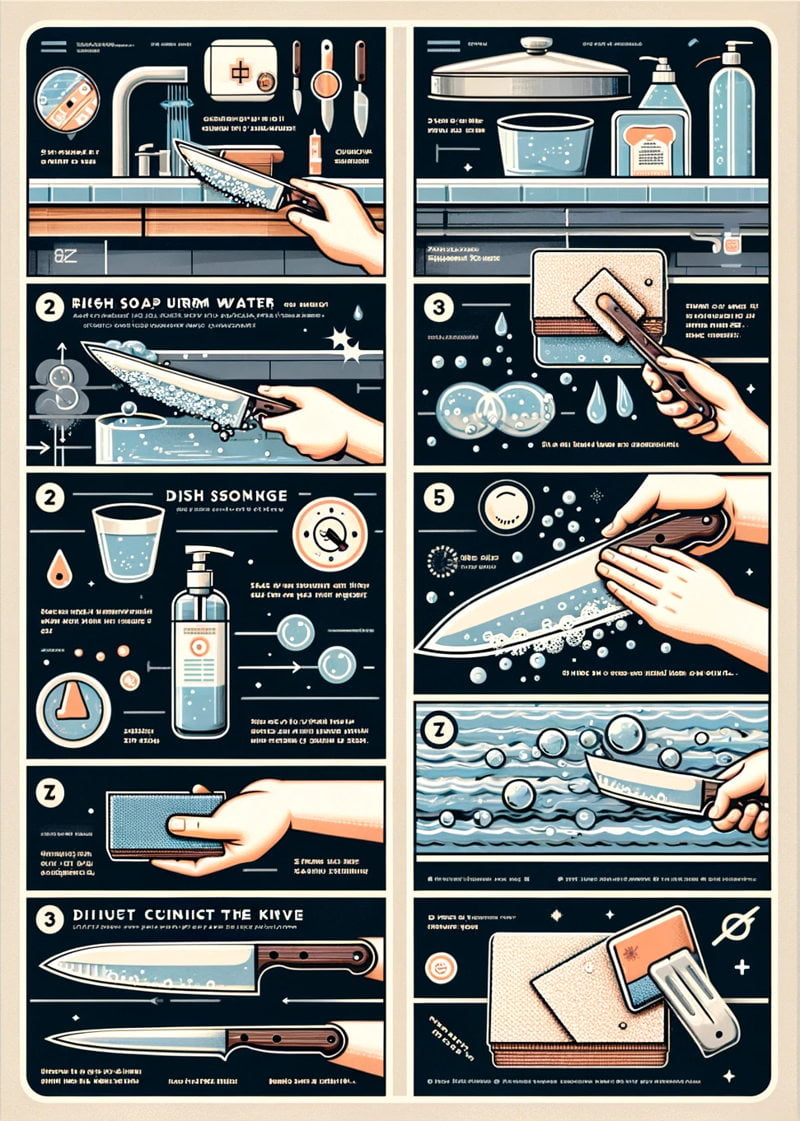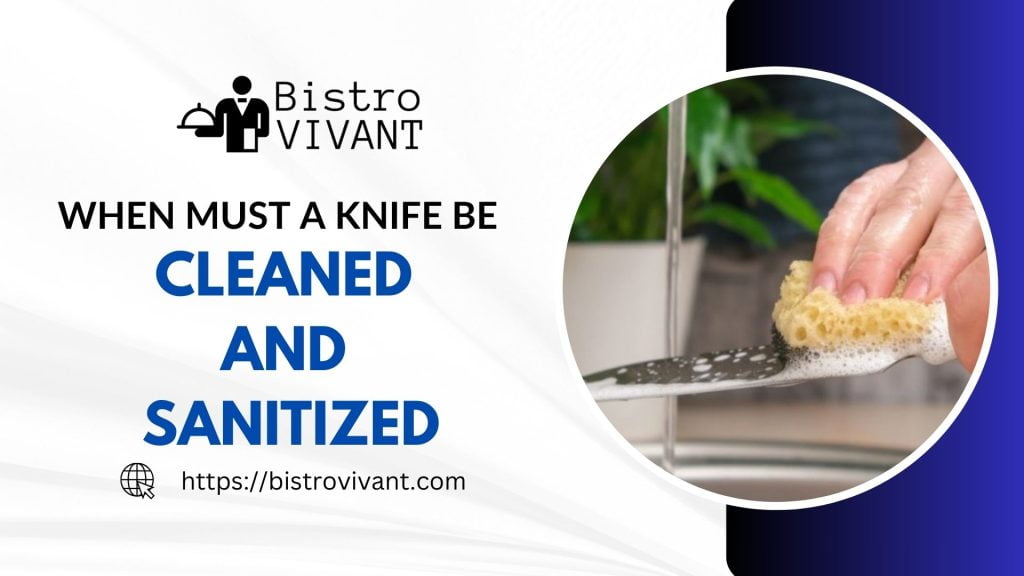Ah, the humble kitchen knife! It’s such a fundamental tool in our culinary adventures, isn’t it? But here’s the thing: its sharp edge isn’t the only aspect we should be mindful of. Keeping it squeaky clean and properly sanitized is equally crucial. So, when must a knife be cleaned and sanitized? That’s a question every cook, whether amateur or professional, should always keep at the forefront of their mind.
Let’s dive into the ‘whens’ and ‘whys’ of this golden rule of kitchen hygiene, highlighting when exactly a knife must be cleaned and sanitized to maintain the utmost safety and cleanliness in our kitchens.
The Cross-Contamination Culprit: Switching Foods
Picture this: you’re chopping chicken, and next on the chopping block are some fresh veggies for a salad. Here’s your first crucial moment for cleaning and sanitizing. Why? Because cross-contamination is a sneaky troublemaker. By thoroughly cleaning and sanitizing your knife when switching from one food type to another, especially from raw meats to vegetables, you’re essentially playing superhero, keeping those pesky bacteria at bay.
The Time Factor: Prolonged Use and Bacteria Build-Up
Now, let’s say you’re in the midst of a cooking marathon. Even if you’re slicing and dicing the same type of food, bacteria are having a field day on your knife’s surface. Yikes! So, after using your knife for a prolonged period, take a brief pause for a cleanliness check. A quick but thorough cleaning and sanitizing session can be a game changer here. It’s not just about being neat; it’s about being safe and smart.
The Final Act: Post-Cooking Cleanup
And here we are, at the end of your culinary journey. You might be tempted to just toss your knife into the sink and call it a day. But hold your horses! This is a pivotal moment. Cleaning and sanitizing your knife immediately after use ensures it’s ready for its next adventure. It’s like tucking your knife into bed, knowing it’s clean, safe, and ready for whatever recipe comes its way tomorrow.

How to Properly Clean and Sanitize Your Knife
Step 1: The Cleaning Process
Cleaning a knife is pretty straightforward. You’ll need some warm, soapy water. Give your knife a good scrub, making sure you get every nook and cranny. This step ensures that any food particles and some of the bacteria are washed away.
Step 2: The Sanitizing Magic: How to sterilize a knife
After the soap and water, it’s time for the main event: sanitizing. This step is crucial for killing off any remaining bacteria. You can use a commercial sanitizing solution or simply immerse the knife in boiling water for a few minutes. This process is like a magic wand, zapping away the remaining germs and ensuring your knife is not just clean but hygienically safe.
Cleaning Hunting Knives
Cleaning hunting knives is crucial for preventing corrosion, maintaining blade sharpness, and extending their lifespan. To clean, follow these steps:
- Start by unloading the knife and folding it to prevent accidental cuts.
- Rinse off excess debris with warm water.
- Prepare a soapy solution by mixing mild dish soap and a few drops of the cleaner.
- Clean the knife blade gently with a soft-bristle brush or toothbrush, avoiding abrasive materials or scouring pads.
- Rinse thoroughly, ensuring no soap residue remains on the blade.
- Dry the knife with a clean cloth or paper towel to prevent corrosion.
- Apply a rust inhibitor or oil to the blade to protect it from rust.
- Store the knife in a dry place, avoiding moisture accumulation.
- If the knife becomes dull, use a honing rod or sharpening stone to restore its edge.
At this point, you might need to find some cleaning solutions. Read this blog for the best knife cleaning solution you need.

Wrapping It Up: The Importance of a Clean and Sanitized Knife
So, let’s recap the golden rules of knife hygiene:
- Switching Foods: Clean and sanitize when moving from one food type to another.
- Prolonged Use: Take a cleaning break during long prep sessions.
- Post-Cooking: Don’t delay the cleaning and sanitizing after cooking.
Remember, a well-cleaned and sanitized knife is more than just a tool; it’s a guardian of your kitchen’s health and safety. By following these simple yet vital steps, you’re not just maintaining your knife; you’re ensuring the well-being of everyone who enjoys your culinary creations. Happy, and safe, cooking!
 https://bistrovivant.com is a participant in the Amazon Services LLC Associates Program, an affiliate advertising program designed to provide a means for website owners to earn advertising fees by advertising and linking to Amazon (.com,.co.uk,.ca, etc.) and any other website that may be affiliated with the Amazon Service LLC Associates Program. As an Amazon Associate, I earn from qualifying purchases.
https://bistrovivant.com is a participant in the Amazon Services LLC Associates Program, an affiliate advertising program designed to provide a means for website owners to earn advertising fees by advertising and linking to Amazon (.com,.co.uk,.ca, etc.) and any other website that may be affiliated with the Amazon Service LLC Associates Program. As an Amazon Associate, I earn from qualifying purchases.

